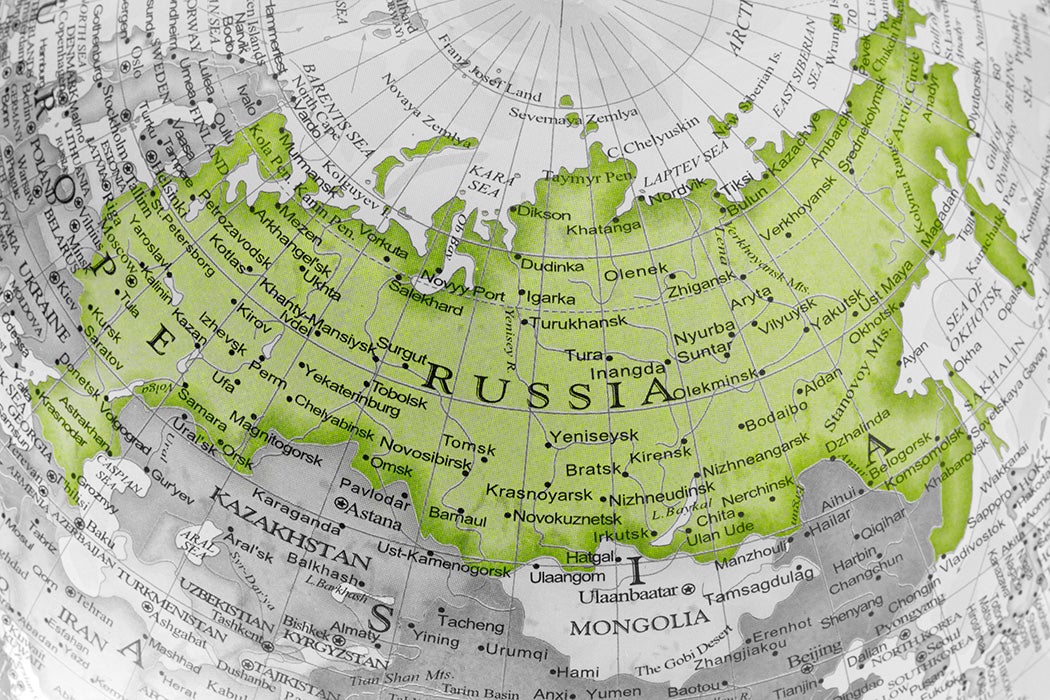Eurasianism is a messianic, imperialist movement originally developed by émigré Tsarists after the Bolshevik Revolution. It postulates that Russia is neither European nor Asian but a synthesis of the two. Therefore, Russian civilization is unique, and its destiny is to span the Eurasian continent.
Political scientist Ray Silvius explains that the original Eurasianists of the 1920s and 1930s, on the run from the Bolsheviks, “combined European and Asian geographical identity” by highlighting the “contribution of Mongol political rule to the history of the Russian state.” They argued that Russians were actually Eurasians, an identity merging the characteristics of both the Slavs and the Mongols (who invaded the lands now called Russia in the thirteenth century). They decried Marxism as a European, that is, foreign, import.
The traumatic shattering of the USSR after 1989 sparked a new generation of Eurasianists, who admired Stalin and the USSR’s imperial reach. The Union of Soviet Socialist Republics was, after all, made up of fifteen national republics—although, of course, that union was nominal, since a centralized party dictatorship ran the show. After the USSR’s break-up, more than a few people yearned for a return of the USSR’s expanse. Eurasianism’s influence on Vladimir Putin’s dictatorship and the Russian attack on Georgia (2008), the take-over of Crimea (2014), and the invasion of Ukraine (2022–) is debated. What isn’t debated is that Eurasianism is a vision of the re-Russianification of territories that split away during the breakup of the USSR.
This is very much a civilizational discourse: expansionist, anti-liberal, anti-Western, and above all, anti-American—all in the name of Russian hegemony across Eurasia. Eurasianism merges Russian exceptionalism, irredentism, neo-Stalinism, fascism, and nationalism. Orthodoxy, mysticism, and pseudoscience about the “genesis” of ethnicities play a role as well. Some of today’s Eurasianists argue that civilization and culture are genetic; perhaps unsurprisingly, its advocates foretell a great role for Russia in the world.
Silvius doesn’t label Putin a neo-Eurasianist, but he argues that he “may exhibit Eurasianist inclinations” when discussing the “cultural, civilizational dimension” of Russia, Russianness, and Russia’s role in the world. While “direct praise for, and invocations of, the Eurasianist legacy [are found] in the highest echelons of the Russian state,” Putin himself is more instrumental: “bending Russian cultural and philosophical legacies—including but not limited to Eurasianism—to more utilitarian dimensions of political economy.”
One of the major theoreticians of Eurasianism was Lev Gumilyov (sometimes transliterated as Gumilev, 1912–1992). The son of famed poets Nikolai Gumilev (murdered by the Cheka) and Anna Akhamatova (persecuted for decades), Gumilyov served two terms in a Gulag because of his disreputable parentage. Yet by the late Soviet period, his bizarre mixture of Eurasian-philia and pseudoscience was quite influential. One of his major works would be reissued as a school textbook after the USSR’s demise.
Weekly Newsletter
Alexsandr Dugin (1962–) is the most prominent of living exponents of Eurasianism. Dugin’s “geopolitics,” the main text of which was “allegedly” co-written with a member of the military’s General Staff Academy, posit that “geophysical realities determine the course of politics” and incorporates “geography, history, demography, theology, ecology, and the occult,” writes Silvius.
For Dugin, “Russia’s mission is to lead the continental powers against the sea-based powers.” Globalization in this reading is “simply an extension of American unilateralism and hegemony that results in cultural homogenization,” Silvius explains. Against the sea-based American hegemon, the Eurasianists offer up a federalism of ethnicities (defined “biologically”) led by Russia. As with many visions of the world, Eurasianism is contradictory: its advocates argue that every ethnicity/nation should be free and equal—Putin, for instance, claims “We will protect the diversity of the world”—but, ahem, only under the supervision of Russia.
A recent review of Eurasianist writings translated into English explores this alternate worldview in more detail.
Teaching Tips
How have attitudes toward Eurasianism changed in the last century? In addition to the works linked above, read and discuss:
- D. S. Mirsky, “The Eurasian Movement” (1927)
- A. Lobanov Rostovsky, “Russia at the Crossroads: Europe or Asia” (1928)
- Boris Ishboldin, “The Eurasian Movement” (1946)
- Madhavan K. Palat, “Eurasianism as an Ideology for Russia’s Future” (1993)
- Charles Clover, “Dreams of the Eurasian Heartland: The Reemergence of Geopolitics” (1999)
- Lasha Tchantouridze, “Eurasianism: In Search of Russia’s Political Identity: A Review Essay” (2001) [Review of 1996 edition of Exodus to the East]
- Mark Entin and Ekaterina Entin, “Russia’s Role in Promoting Great Eurasia Geopolitical Project” (2016)
- Eugene Rumer, Richard Sokolsky, and Aleksandar Vladicic, Russia in the Asia-Pacific: Less Than Meets the Eye (2020)







